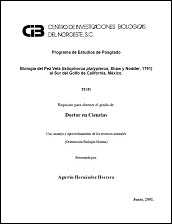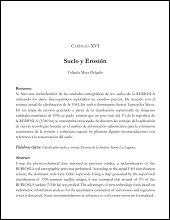Bioselección de péptidos y fragmentos de anticuerpos desplegados en fagos que se unen al virus del síndrome de la mancha blanca
Resumen
El virus del síndrome de la mancha blanca (WSSV) continúa siendo el principal patógeno del camarón cultivado. Debido a las enormes pérdidas económicas que genera es una amenaza para la permanencia y crecimiento de la industria. Hasta ahora no existe ningún tratamiento efectivo contra la infección. En la búsqueda de estrategias potenciales para el control de este patógeno se han utilizado anticuerpos y un péptido que se unen a proteínas virales estructurales claves para la infección con el fin de neutralizarlas. El propósito de este estudio fue bioseleccionar por primera vez fragmentos variables de cadena sencilla de anticuerpos (scFv) humanos, dodecapéptidos lineales y heptapéptidos constreñidos desplegados en fagos que pudieran unirse al WSSV de forma específica utilizando la tecnología de phagedisplay. Para ello se tamizaron, mediante tres rondas de bioselección, tres librerías de origen no inmune contra WSSV inactivo inmovilizado. El repertorio de fagos anti-WSSV seleccionados y algunos clones fueron sometidos a prueba de phage ELISA para probar su especificidad observándose clones positivos y un incremento de la señal de la ronda I a la III en todos los casos. Los resultados sugieren que durante las rondas de bioselección se enriquecieron las secuencias más afines por el WSSV y que tanto las poblaciones de fago-scFv y fago-péptidos seleccionados durante la tercera ronda del biopanning, como los clones que despliegan dodecapéptidos L2.6, L3.1; heptapéptidos 7C2.3, 7C2.4, 7C2.7, 7C3.1, 7C3.3, 7C3.4 y scFv S2.5, S3.3, S3.11, S3.12, son potenciales neutralizantes del WSSV dada la especificidad de su unión a proteínas estructurales del virus o una herramienta biotecnológica útil en su detección o investigación. White spot syndrome virus (WSSV) remainds the mayor cultured shrimp pathogen. Due to the enormous economic losses it generates is a threat to the continuance and growth of the industry. So far there is no effective treatment for the infection. In search of potential strategies to control this pathogen have been used antibodies and a peptide that bind to infection’s key structural viral proteins in order to neutralize them. The purpose of this study was to bioselect for first time phage-displayed human single-chain variable fragments of antibodies, linear dodecapeptide and loop-constrained heptapeptide that could bind specifically to WSSV using phage display technology. Three premade nonimmune libraries was screened through three rounds of bioselection against inmovilized WSSV inactive. The repertoire of anti-WSSV selected phage and some clones were tested by phage ELISA to probe their binding specificity observing positive clones and a signal increase of the round I to III in all cases. The results suggest that during bioselection rounds were enriched greater affinity sequences for WSSV and that both populations of phage-scFv and phage-peptides selected during the third round of biopanning, and the phage clones that display dodecapeptides L2.6, L3.1; heptapeptides 7C2.3, 7C2.4, 7C2.7, 7C3.1, 7C3.3, 7C3.4 and scFv S2.5, S3.3, S3.11 S3.12, are potential WSSV neutralizing by their specificity of binding viral structural proteins or a useful biotechnological tool for its detection or scientific research.
Colecciones
Ítems relacionados
Mostrando ítems relacionados por Título, autor o materia.
-
PROMOCIÓN DEL PERIFITON PARA EL CULTIVO DE CAMARÓN BLANCO: HACIA UNA ACUICULTURA ECOLÓGICA
DOMENICO VOLTOLINA LOBINA; JUAN MANUEL AUDELO NARANJO; MARIA DEL ROSARIO PACHECO MARGES -
Suelo y Erosión
YOLANDA LOURDES MAYA DELGADO


